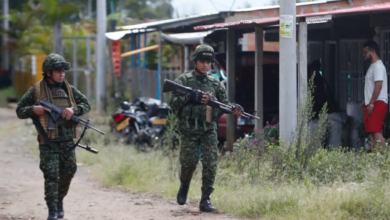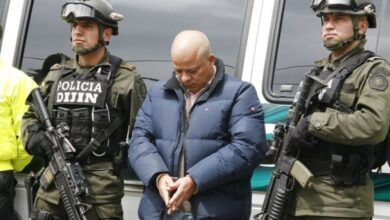5 Myths About Traffic Regulations in Colombia
LatinAmerican Post brings some arguments that Colombians use to break traffic laws in that country. Which ones are true and which ones are not? .

Photo: Freepik
LatinAmerican Post | Christopher Ramírez
Listen to this article
Leer en español: 5 mitos sobre las normas de tránsito en Colombia que podrías infringir
According to the Integrated Information System on Fines and Sanctions for Traffic Violations (SIMIT), the traffic sanctions that Colombians incur the most are directly related to the partial or total neglect of their safety or that of other road actors.
Whether due to disrespect for the most minimal traffic regulations, such as not wearing a seat belt, or some more daring ones, such as driving in the opposite direction to that indicated by the road signs, Colombians frequently live in contempt of authority while driving move around the national territory.
Now, in a world of social networks, fast information and a lot of 'fake news', it is normal for people to venture to drive with wrong data about what they can or cannot do during their mobility activities. Thus, elements such as the consumption of alcoholic beverages or the use of cell phones begin to be protagonists in the excuses that some show when they are fined, putting as an argument law that are misunderstood or that simply do not exist.
For this reason, LatinAmerican Post has decided to deny or verify five myths about traffic regulations in Colombia that are heard almost daily on the streets of that country.
You can also read: What Is The Real Capital Of Public Bicycles in Latin America?
“Traffic lights can be crossed on red after a certain time”: False
Colombian law is clear in indicating that the red light of a traffic light is the same as a 'Stop'. That is, it forces every driver, regardless of the time, to stop until the light turns green again.
Of course, violating this rule has an economic punishment that in the case of Colombia would be 30 Current Minimum Legal Daily Wages (SMLDV), or what is the same: one million Colombian pesos (almost 200 dollars).
However, what is allowed, under article 118 of the National Land Traffic Code, is to turn right even when the traffic light is red, as long as this does not endanger the life of a pedestrian or the tranquility of the present traffic.
“The Mandatory Traffic Accident Insurance (SOAT) is only valid if you have it physically”: False
This insurance that every driver, whether car or motorcycle, must carry to show in case of a traffic accident, is valid both physically and virtually. That is, in the event that a uniformed officer demands this document from a citizen, he or she could show it on a cell phone, tablet or even PC, as well as printed on any paper, without receiving any kind of reproach from the competent authority.
“With just one beer, I can give a positive breathalyzer test”: True
Although many people consider that "one does no harm", the truth is that for the authorities, a person is driving under the influence of alcohol just by drinking a beer or another kind of intoxicating drink.
This is determined by a breathalyzer, which does not show whether you drank many beers, but rather the number of milligrams of alcohol in your body per 100 milliliters of blood.
Thus, according to Forensic Medicine, only 25 mg/dl, "alcoholic unit that would correspond to the social dose, which would be equivalent to a shot of whiskey (30 cm3), a pint of beer (330 cm3) or a glass of wine (250 cm3)”, the breathalyzer test would be positive. This in turn would lead to the immobilization of the vehicle, the suspension of the license and, of course, a fine that could range from almost 3 million pesos (596 dollars) to nearly 48 million pesos ($9,500).
“If a traffic officer stops me and I don't have papers, I have 20 minutes to get them”: False
At this point, there are a couple of legal limbos that can make a person sanctioned by law or not. In the first place, in the event that a police officer stops the citizen, and he does not have the ownership card of the vehicle in which he is mobilizing, the truth is that the driver can contact a family member or close person who brings him the paper to the place of detention. There is no time limit for this.
However, the situation changes when the person drives without their respective SOAT, driving license or technical-mechanical review. In case of not carrying any of these three documents, the agent is obliged to impose a penalty: 266 thousand pesos (52 dollars) for the driver's license; 500 thousand pesos (100 dollars) for the technical-mechanical and one million pesos (almost 200 dollars) for the SOAT.
“Speed limits can be exceeded as long as it is not too much”: False
This is one of the most widespread myths in social networks and also one of the most dangerous, placing it on the list of drunk driving or crossing the traffic light on a red light. As indicated by the National Code of Land Traffic, there is no exception that allows a driver to exceed the corresponding speed limit, according to the place where the person moves.
It should be remembered that articles 106, 107 and 108 of this code establish that the speed limit for urban areas is 60 kilometers per hour (km/h); 80 km/h in rural areas and up to 100 km/h on roads or arterial roads that allow it.
Thus, in case of not respecting these limits, drivers would be deserving of sanctions of 500 thousand pesos (100 dollars), or one million pesos (almost 200 dollars) if the law is broken with a school vehicle.





